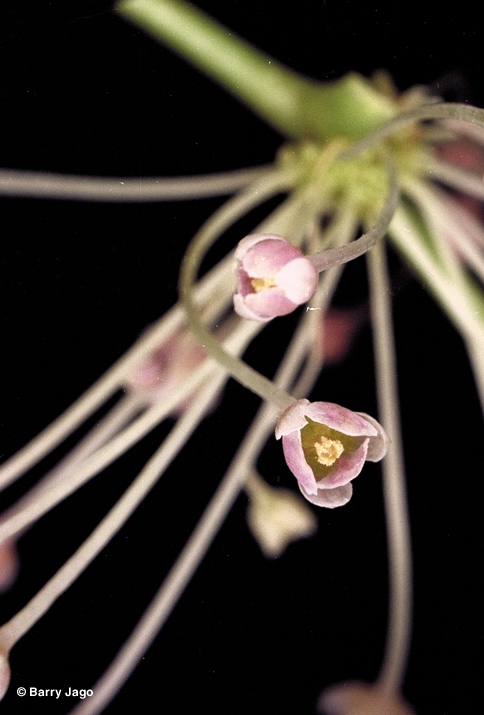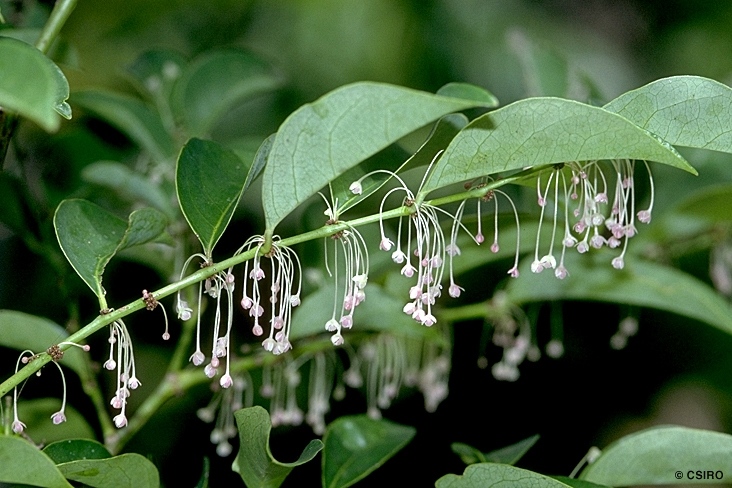Australian Tropical Rainforest Plants - Online edition
Phyllanthus cuscutiflorus S.Moore






Moore, S. le M. (1905) The Journal of Botany 43 : 148. Type: Queensland, Myola and Barron River; G. Podenzana.
Phyllanthus
Seldom exceeding 30 cm dbh.
Leaf blades about 4.5-13 x 3-6 cm, much paler on the underside. Leaves tend to be distichous rather than spirally arranged on the rather slender twigs (about 0.5-1.5 mm diam.). Oil dots visible with a lens. Midrib raised on the upper surface.
Flowers emit a strong obnoxious odour particularly in the late afternoon. Pedicels long and filiform, about 11-12 x 0.3 mm, flowers small, about 2 mm diam. Disk in the male flowers consists of three cerebriform glands. Stamens united to form an androphore. Disk in the female flowers continuous, somewhat lobed and slightly pitted. Tepals horizontal at maturity in the female flowers.
Fruits depressed, +/- 3-lobed, about 3 x 4-5 mm. Seeds about 1.5-2 x 1.5 mm.
Cotyledons obovate, about 4-6 mm long. At the tenth leaf stage: leaf blade broadly ovate, glabrous, apex acute or obtuse, base rounded; stipules very small, triangular, visible only with a lens. All leaves after the first are produced on lateral branches which could be mistaken for compound leaves. Seed germination time 8 days.
Occurs in CYP and NEQ. Altitudinal range from near sea level to 400 m. Grows in monsoon forest and drier rain forest. Also occurs in New Guinea?





